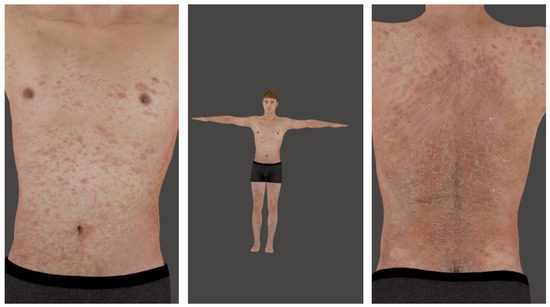Artificial Intelligence in Dermatology
A topical collection in Dermato (ISSN 2673-6179).
Viewed by 27883Editor
Topical Collection Information
Our new journal “Dermato” is proud to announce a Topical Collection on “Artificial Intelligence in Dermatology”. Much has been written about the subject in recent years, and new advances have been made that seemingly make it possible to replace the diagnostic powers of dermatologists in the near future. Many of us are wondering, however, how long this will take. As of today, not a single diagnostic AI algorithm has been approved by the FDA in dermatology, in contrast to radiology and cardiology that have double-digit numbers of such approvals already. In this issue, we are going to explore the challenges of dermatology to reach the threshold of having clinically useful algorithms.
One important difference between dermatology and radiology or cardiology is the lack of standardized data sources. Radiology has well-standardized protocols with patient posture, time of exposure, etc. that allow for reproducible images all over the world. The dermatologist, however, can make a clinical photograph any way they prefer it. This matters little for communication with human colleagues, but it is a great difficulty for training machine learning algorithms. One important exception is dermoscopy; hence, it may not surprise that the greatest AI-based classification advances in dermatology were made with dermoscopic images. This issue will also demonstrate how AI can, even now, be used as decision support tool for clinicians. As active dermatologists, we may not embrace being replaced completely by a machine―but additional support of our diagnostic capabilities will surely come in handy. Indeed, some clinical tools are offering a few such features already.
The centerpiece of this Topical Collection will be general clinical advances with AI in dermatology, and we have collected a fine selection of articles that demonstrate feasible approaches of integrating trained algorithms for the benefit of our patients.
Prof. Dr. Alexander Navarini-Meury
Guest Editor
Manuscript Submission Information
Manuscripts should be submitted online at www.mdpi.com by registering and logging in to this website. Once you are registered, click here to go to the submission form. Manuscripts can be submitted until the deadline. All submissions that pass pre-check are peer-reviewed. Accepted papers will be published continuously in the journal (as soon as accepted) and will be listed together on the collection website. Research articles, review articles as well as short communications are invited. For planned papers, a title and short abstract (about 100 words) can be sent to the Editorial Office for announcement on this website.
Submitted manuscripts should not have been published previously, nor be under consideration for publication elsewhere (except conference proceedings papers). All manuscripts are thoroughly refereed through a single-blind peer-review process. A guide for authors and other relevant information for submission of manuscripts is available on the Instructions for Authors page. Dermato is an international peer-reviewed open access quarterly journal published by MDPI.
Please visit the Instructions for Authors page before submitting a manuscript. The Article Processing Charge (APC) for publication in this open access journal is 1000 CHF (Swiss Francs). Submitted papers should be well formatted and use good English. Authors may use MDPI's English editing service prior to publication or during author revisions.









